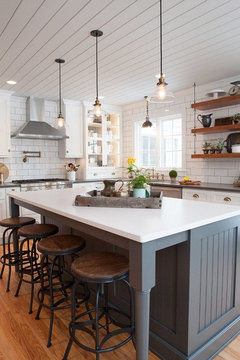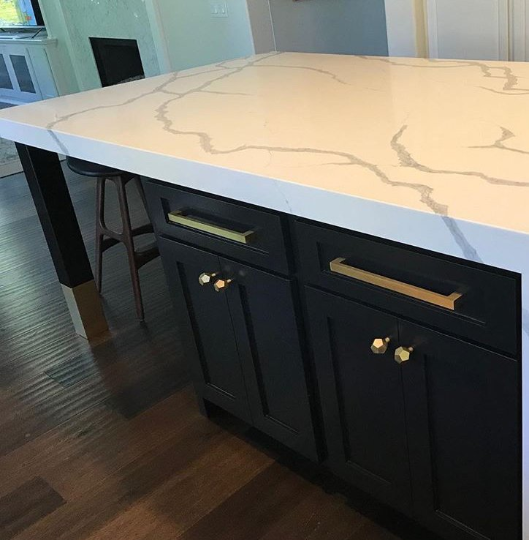High-grade Kitchen Island Legs for a Sturdy Island Base
High-grade Kitchen Island Legs for a Sturdy Island Base
Blog Article
A Guide to Picking the Perfect Kitchen Island for Your Home
Selecting the best kitchen area island is a multi-faceted choice that can considerably impact both the capability and visual appeals of your home. Recognizing your kitchen's spatial dynamics is the first step, making certain that the island fits flawlessly without interrupting the flow. Past space considerations, identifying the primary objective of the island-- be it for meal prep work, eating, or added storage-- is vital. The option of materials and surfaces also plays a necessary function in balancing the island with your kitchen area's total layout. As we explore these components better, the subtleties of each decision will become clear.
Assessing Your Area
Before choosing a kitchen island, it is vital to extensively examine your space to make sure the addition will be both functional and visually pleasing. Begin by determining the readily available location, including the width, length, and elevation of the kitchen. Exact measurements are essential to avoid acquiring an island that overwhelms the space or one that is disproportionately tiny.
Take into consideration the existing layout and just how the island will integrate with the current web traffic flow. A well-placed island ought to not hinder or block pathways accessibility to vital home appliances, such as the oven, sink, and refrigerator. Leave adequate clearance area-- commonly around 36 to 48 inches on all sides-- to permit comfy motion and workspace effectiveness.
Following, examine the natural light and sightlines within your kitchen area. An island that obstructs a window or interferes with visual cohesion can make the area feel confined and dark. Consider how the island's positioning will certainly influence lighting and presence, guaranteeing it enhances as opposed to takes away from the kitchen area's atmosphere.
Establishing the Purpose
Identifying the function of your kitchen area island is an important action in guaranteeing it meets your specific needs and choices. Before diving right into style or size factors to consider, it is necessary to clarify what main feature the island will offer in your kitchen area. Will it be a central center for dish preparation, an informal dining area, or perhaps an additional storage solution?
Furthermore, sufficient counter space for slicing and mixing, along with available storage space for kitchen area devices and ingredients, can transform the island into an effective workstation. On the other hand, if the island is intended to help with social communications or serve as an eating area, seating arrangements come to be extremely important.

Selecting the Right Dimension
Picking the appropriate dimension for your kitchen island is an equilibrium of functionality and room explanation optimization. A suitable cooking area island need to supply sufficient work area while making certain that activity around the kitchen continues to be unblocked. Begin by gauging your kitchen area; a minimum clearance of 36 to 42 inches around the island is necessary to permit for comfortable movement and availability.
The measurements of the island need to mirror its designated usage. If the island will serve mainly as a prep area, a width of 24 to 36 inches may be enough.

Lastly, make certain that the island's size matches the overall kitchen format, staying clear of any type of overwhelming presence that could interfere with the kitchen area's visual and utility - kitchen island legs. Mindful preparation and accurate measurements will aid you achieve a reliable and unified kitchen area setting
Choosing Products and Finishes
After determining the suitable dimension for your kitchen island, the following action entails choosing suitable products and coatings. The choice of materials considerably affects both the aesthetic charm and capability of your kitchen island. Popular products for counter tops consist of butcher, quartz, and granite block, each offering distinct advantages.
Along with the counter top, consider the materials for the space station. Strong timber uses a classic, strong appearance, while stainless steel offers a streamlined, modern look and is very easy to tidy. Repainted coatings can present website link a dash of shade, with choices varying from soft pastels to bold, lively tones.
Pay interest to the sturdiness of coatings, particularly in high-traffic areas, to keep the island's look over time. Selecting the ideal materials and finishes will certainly boost both the performance and aesthetic appeal of your description kitchen area island.
Incorporating Useful Features
Integrating useful attributes right into your cooking area island can substantially boost its energy and convenience, transforming it right into a functional centerpiece of your cooking area. One crucial function to take into consideration is additional storage space. Incorporating cabinets, drawers, and open shelving can give much-needed area for kitchenware, utensils, and little home appliances, helping to keep a clutter-free setting.
One more valuable enhancement is an integrated sink or cooktop, which can simplify dish prep work and clean-up procedures. A sink can help with jobs such as cleaning veggies and cleaning up recipes, while a cooktop can enable food preparation straight on the island, fostering a more interactive and social food preparation experience.
Consider including seating alternatives, specifically if your cooking area increases as a casual eating location. Bar feceses or integrated benches can change the island right into a multifunctional room for meals, research, or laid-back gatherings.
Finally, integrating electric outlets into your kitchen island can improve its practicality. Outlets offer practical gain access to for small kitchen area devices, billing terminals for electronic devices, and additional lights options.
Final Thought

Before selecting a kitchen area island, it is necessary to extensively examine your area to make sure the addition will certainly be both practical and visually pleasing.Selecting the ideal dimension for your cooking area island is a balance of performance and room optimization. kitchen island legs. A perfect kitchen island should offer ample work area while ensuring that movement around the kitchen area stays unblocked.Including useful functions into your kitchen island can substantially boost its utility and comfort, changing it right into a flexible centerpiece of your cooking area.In final thought, picking the excellent cooking area island requires a complete evaluation of the offered room, clarity regarding its main feature, and careful consideration of the appropriate dimension and products
Report this page